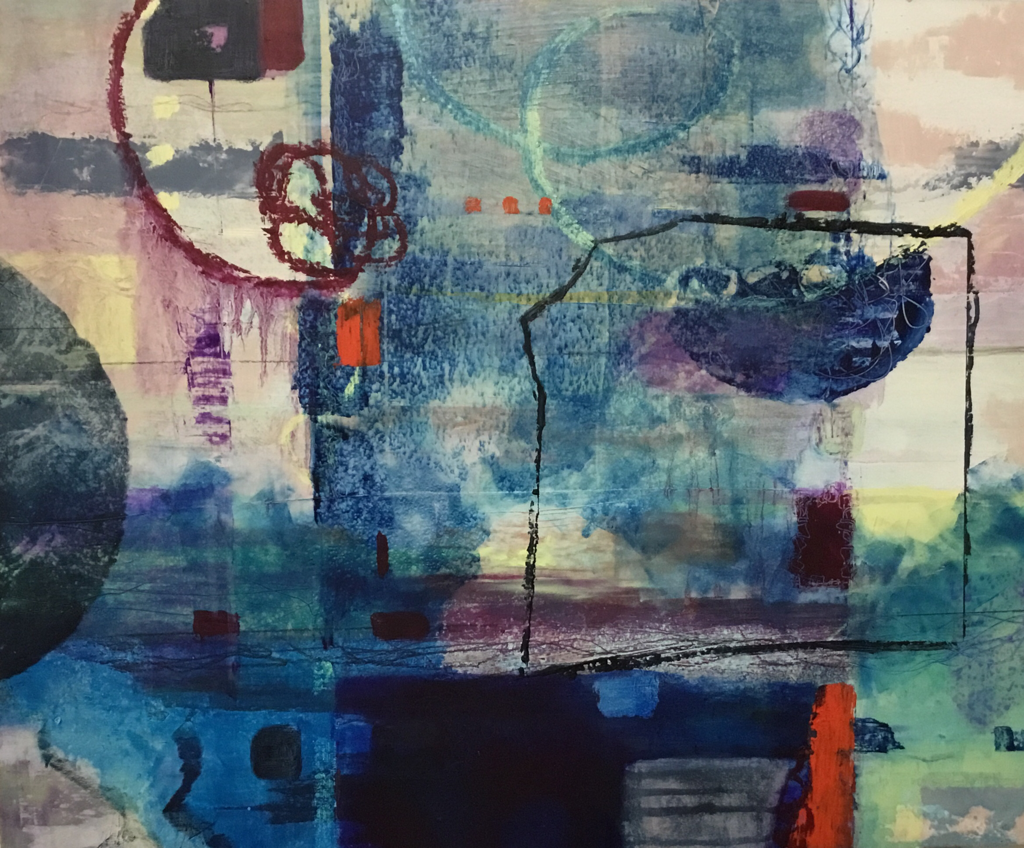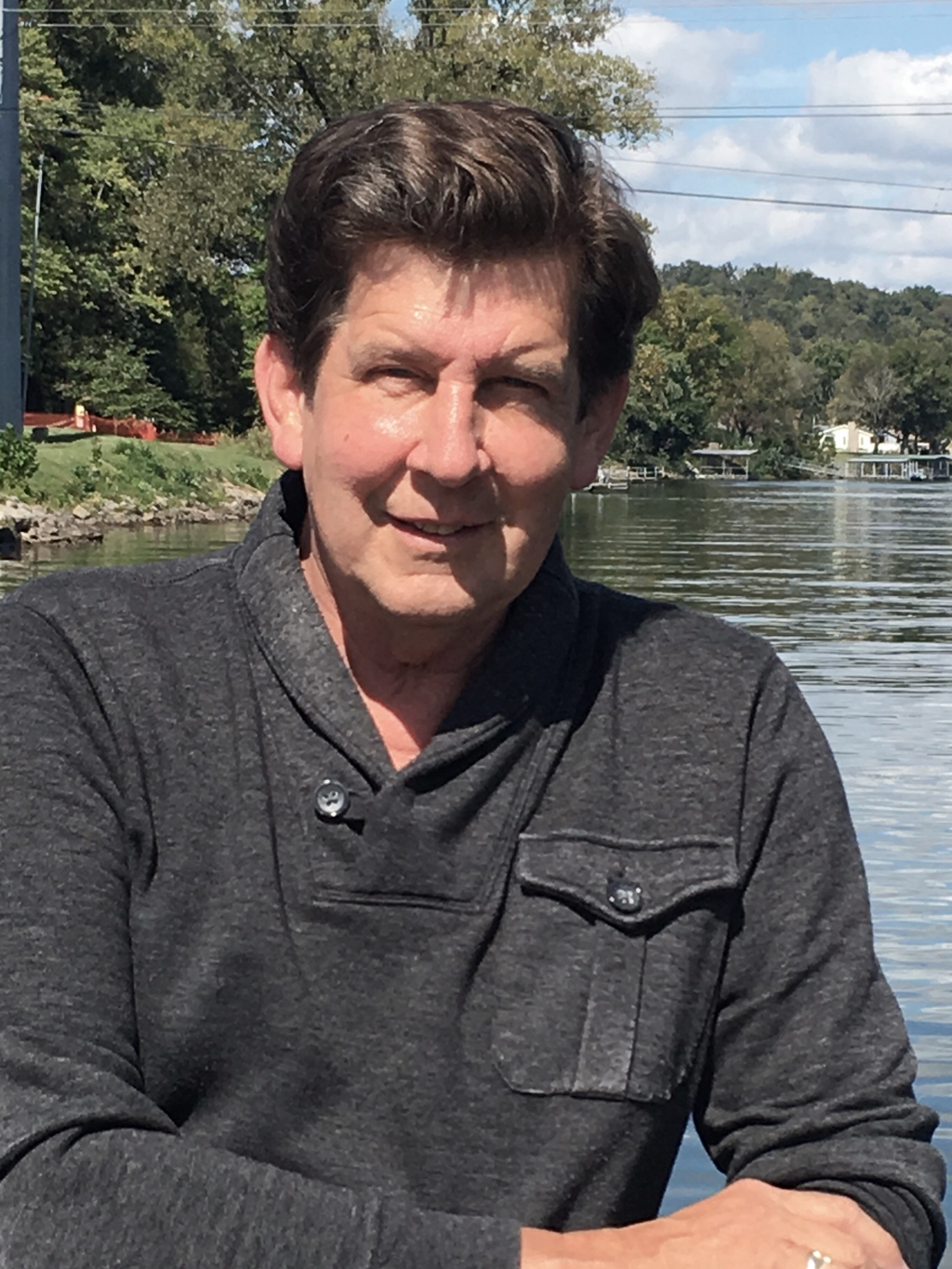|
Over the past twenty years the focus of Mark Witzling’s work has evolved from the figurative to abstract. It’s a creative shift that has offered him endless possibilities for experimentation in his paintings. “I love abstraction. It’s freeing. I paint realistically as well, but abstraction uses all of the tools and techniques that you use when you do realistic painting, but it frees you from having it look like something else. It’s all about what you’re trying to express from the inside and bring that out.” About eight years ago he discovered the technique of mixing cold wax with oil paint. The wax, which is soft, almost creamy, mixes easily with the oil and can be brushed on to a canvas. And the combination allows - particularly for an abstract painter - a wide variety of opportunities and challenges. Today it’s his medium of choice. “Oil and cold wax is all about building up layers and layers and layers of paint and then excavating back down and building up more layers. There’s this whole give and take, so maybe this painting is about layers of warm over cool and then cool over warm, or about value contrast, or a limited palette, or about lines and marking. So, it’s not just totally free and random. I have some sense of what I’m trying to do with it.” The overall concept of the painting might be something very abstract - like a reflection on memory. Or an inspiration from a thought or feeling he has experienced in the course of daily life. But most interesting to Witzling is the technical challenge he sets up for himself in each painting, which may or may not be consciously perceived by viewers. “For the most part, the drivers for me are color first and then shape next. And after that it’s a mixture of mark making and texture and line, and I’ll experiment with different things. “When I’m painting, I’m not thinking of how the viewers is going to react to the painting. That comes later. I think the payoff comes when somebody asks you about the work. They might see something in the painting - a landscape, the ocean or a person - that had nothing to do with what I was creating - but that doesn’t matter. The fact is, the work engaged them at some level. It elicits some kind of response.” Witzling offers an observation about his own work flow that might serve as a valuable piece of advice for any artist who encounters frustration at some point in the creative process: “It’s important not to try to fine tune the work too early. With oil and wax painting when you’re building up all these layers, it’s really easy to fall in love with the early layers - a color or a portion of the canvas that you don’t want to change - but that’s when you start to falter because you’re putting constraints in the works. You need to be able to cover up something you really love to get to the next level in the painting.” “There’s always an ugly stage in the middle of the work. There are the early stages when you’re getting a foundation. And then there’s sort of an ugly stage, and then the work starts to appear and evolve. Then you build up those final layers, experimenting and sometimes making mistakes. But you just keep on going.” “When I’m painting in the studio, it’s the only thing that I do just for me. It’s my time. It’s honest, and what I mean by that is that whatever ends up on the surface - for good or for bad - I’m the only person who can do that. Other artists can do things that I can’t do, but this is mine. And that’s thrilling - to create something that no one else can do. It’s the only thing that I can do that no one else can.” Visit him at www.markwitzlingart.com
2 Comments
2/2/2018 03:00:43 pm
Mark's work is terrific. It has many layers that create a sense of discovery. I've know Mark for some time and he is truly dedicated to his art,and how he feels about it. I'm generally not a fan of abstract art but Mark's is an exception. I always see different things in his work. Its a pleasure knowing him and being able to appreciate his work.
Reply
Your comment will be posted after it is approved.
Leave a Reply. |
Patrick Murphy has worked in St. Louis radio and television for the past forty years. He has produced a variety of arts-related programs for for St. Louis public television, including the series "Arts America" and "Night at the Symphony". He currently serves on the Webster Groves arts commission and is an aspiring water colorist.
Archives
August 2018
Categories
All
|









 RSS Feed
RSS Feed